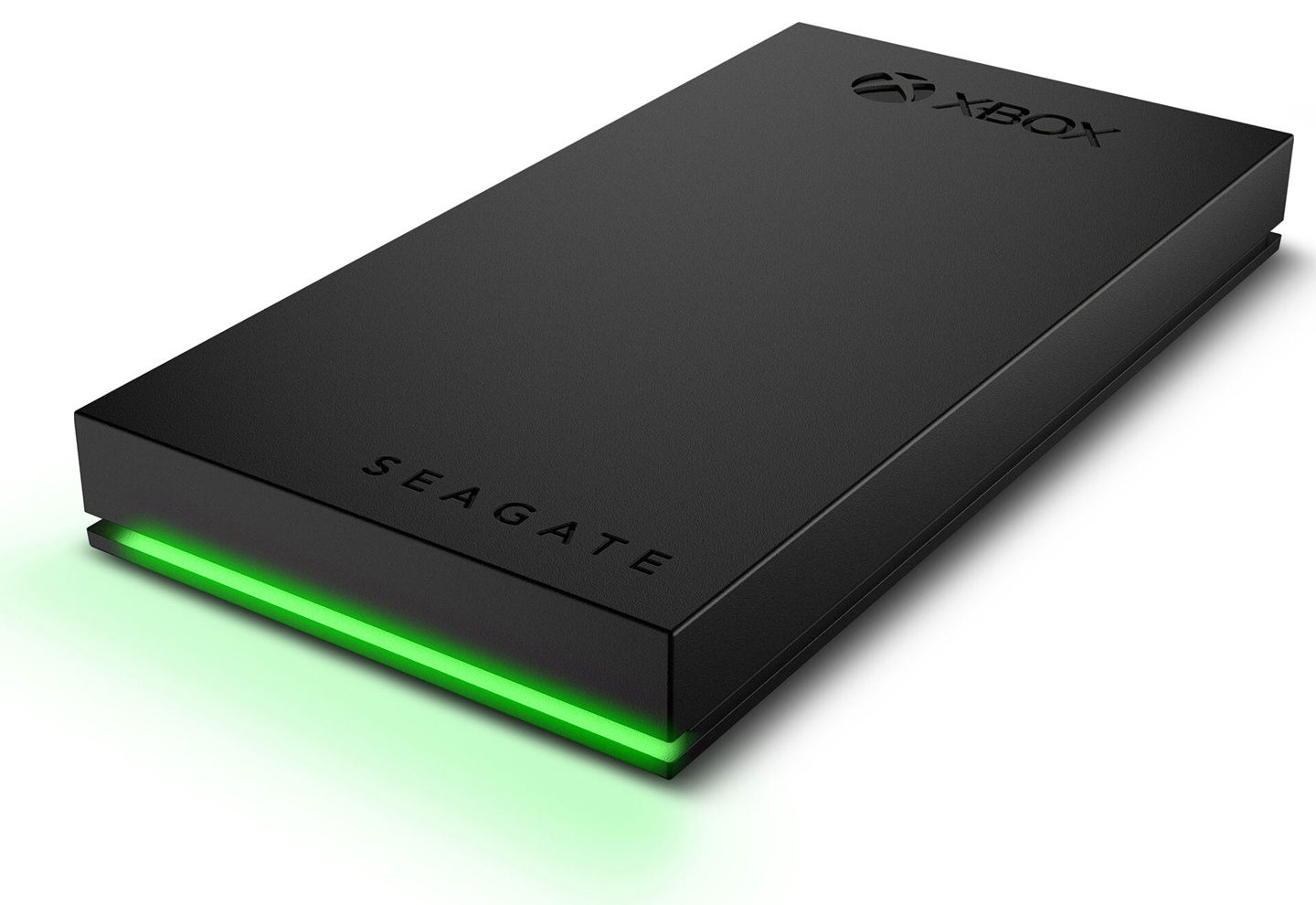йЈҺжөҒдёҚеңЁи°Ҳй”ӢиғңпјҢиў–жүӢж— иЁҖе‘іжңҖй•ҝгҖӮиҝҷзҜҮж–Үз« дё»иҰҒи®Іиҝ°Androidдёӯзҡ„дә”еӨ§еёғеұҖзӣёе…ізҡ„зҹҘиҜҶпјҢеёҢжңӣиғҪдёәдҪ жҸҗдҫӣеё®еҠ©гҖӮ
Androidдёӯзҡ„дә”еӨ§еёғеұҖ
1.дәҶи§ЈеёғеұҖ
дёҖдёӘдё°еҜҢзҡ„з•ҢйқўжҖ»жҳҜиҰҒз”ұеҫҲеӨҡдёӘжҺ§д»¶з»„жҲҗзҡ„пјҢйӮЈжҲ‘们еҰӮдҪ•жүҚиғҪи®©еҗ„дёӘжҺ§д»¶йғҪжңүжқЎдёҚзҙҠең° ж‘Ҷж”ҫеңЁз•ҢйқўдёҠпјҢиҖҢдёҚжҳҜд№ұзіҹзіҹзҡ„е‘ўпјҹиҝҷе°ұйңҖиҰҒеҖҹеҠ©еёғеұҖжқҘе®һзҺ°дәҶгҖӮеёғеұҖжҳҜдёҖз§ҚеҸҜз”ЁдәҺж”ҫзҪ®еҫҲ еӨҡжҺ§д»¶зҡ„е®№еҷЁпјҢе®ғеҸҜд»ҘжҢүз…§дёҖе®ҡзҡ„规еҫӢи°ғж•ҙеҶ…йғЁжҺ§д»¶зҡ„дҪҚзҪ®пјҢд»ҺиҖҢзј–еҶҷеҮәзІҫзҫҺзҡ„з•ҢйқўгҖӮеҪ“然пјҢ еёғеұҖзҡ„еҶ…йғЁйҷӨдәҶж”ҫзҪ®жҺ§д»¶еӨ–пјҢд№ҹеҸҜд»Ҙж”ҫзҪ®еёғеұҖпјҢйҖҡиҝҮеӨҡеұӮеёғеұҖзҡ„еөҢеҘ—пјҢжҲ‘们е°ұиғҪеӨҹе®ҢжҲҗдёҖдәӣ жҜ”иҫғеӨҚжқӮзҡ„з•Ңйқўе®һзҺ°.
2.еёғеұҖзҡ„еҲҶзұ»
зәҝжҖ§еёғеұҖ(LinearLayout)
зӣёеҜ№еёғеұҖ(RelativeLayout)
иЎЁж јеёғеұҖ(TableLayout)
её§еёғеұҖ(FrameLayout)
з»қеҜ№еёғеұҖ(дәҶи§Ј)
дёӢйқўжҲ‘们жқҘзңӢдёҖдёӢзәҝжҖ§еёғеұҖ
еҲӣе»әзәҝжҖ§еёғеұҖжӯҘйӘӨ:
йҰ–е…ҲжҲ‘们жүҫеҲ°AndroidйЎ№зӣ®res/layout
гҖҖ

ж–Үз« еӣҫзүҮ
然еҗҺеҸій”®,еј№еҮәдёӢйқўж“ҚдҪң
гҖҖ

ж–Үз« еӣҫзүҮ

ж–Үз« еӣҫзүҮ
еҪ“еҲӣе»әеёғеұҖж–Ү件еҗҺ,жҲ‘们жқҘжөҸи§ҲдёҖдёӢиҜҘж–Ү件зҡ„еҶ…е®№
1 < ?xml version="1.0" encoding="utf-8"?> 2 < LinearLayout xmlns:android="http://schemas.android.com/apk/res/android" 3android:layout_width="match_parent" 4android:layout_height="match_parent" 6android:orientation="vertical" > 7 8 9 < /LinearLayout>
然еҗҺжҲ‘们дҝ®ж”№дёҖдёӢж–Ү件дёӯзҡ„еҶ…е®№
1 < ?xml version="1.0" encoding="utf-8"?> 2 < LinearLayout xmlns:android="http://schemas.android.com/apk/res/android" 3android:layout_width="match_parent" 4android:layout_height="match_parent" 6android:orientation="vertical" > 7 8 34 35 36< TextView 37android:layout_width="wrap_content" 38android:layout_height="wrap_content" 39android:background="#ffff00" 40android:text="AAA" 41android:textSize="25sp" /> 45 46< TextView 47android:layout_width="wrap_content" 48android:layout_height="wrap_content" 49android:background="#eee" 50android:text="BBB" 51android:textSize="25sp" /> 52 55< TextView 56android:layout_width="wrap_content" 57android:layout_height="wrap_content" 58android:background="#ccc" 59android:text="CCC" 60android:textSize="25sp"/> 61 63 < /LinearLayout>
дёӢйқўжҲ‘们йғЁзҪІдёҖдёӢAndroidйЎ№зӣ®,зңӢзңӢиҝҗиЎҢзҡ„з»“жһңжҳҜеҰӮдҪ•зҡ„

ж–Үз« еӣҫзүҮ

ж–Үз« еӣҫзүҮ
еӣҫ1еӣҫ2
иҝҗиЎҢеҸҜд»ҘзңӢеҲ°жҺ§д»¶жҳҜеһӮзӣҙж”ҫзҪ®зҡ„,йӮЈд№ҲжңүеһӮзӣҙе°ұжңүж°ҙе№іж”ҫзҪ®зҡ„,е…¶е®һжҳҜеһӮзӣҙиҝҳжҳҜж°ҙе№ізҡ„ж №LinearLayoutдёӯзҡ„android:orientationжңүе…і,иҜҘеұһжҖ§жңүдёӨдёӘеҖј,дёҖдёӘvertical(еһӮзӣҙзҡ„),еҸҰдёҖдёӘжҳҜhorizontal(ж°ҙе№ізҡ„),еҰӮжһңandroid:orientationеұһжҖ§и®ҫзҪ®дёәverticalйӮЈд№Ҳж•Ҳжһңеӣҫе°ұжҳҜеӣҫ1,еҰӮжһңandroid:orientationеұһжҖ§и®ҫзҪ®дёәhorizontal,йӮЈд№Ҳж•Ҳжһңеӣҫе°ұжҳҜеӣҫ2
дәҶи§Ј LinearLayout зҡ„жҺ’еҲ—规еҫӢеҗҺпјҢжҲ‘们еҶҚжқҘеӯҰд№ дёҖдёӢе®ғзҡ„еҮ дёӘе…ій”®еұһжҖ§зҡ„з”Ёжі•еҗ§гҖӮ
android:layout_gravity еұһжҖ§
android:layout_gravity жҳҜз”ЁдәҺжҢҮе®ҡжҺ§д»¶еңЁеёғеұҖдёӯзҡ„еҜ№йҪҗ ж–№ ејҸ гҖӮ android:layout_gravity зҡ„ еҸҜ йҖү еҖј е’Ң android:gravity е·® дёҚ еӨҡ пјҢ дҪҶ жҳҜ йңҖ иҰҒ жіЁ ж„Ҹ пјҢ еҪ“ LinearLayout зҡ„жҺ’еҲ—ж–№еҗ‘жҳҜ horizontal ж—¶пјҢеҸӘжңүеһӮзӣҙж–№еҗ‘дёҠзҡ„еҜ№йҪҗж–№ејҸжүҚдјҡз”ҹж•ҲпјҢеӣ дёәжӯӨж—¶ж°ҙ е№іж–№еҗ‘дёҠзҡ„й•ҝеәҰжҳҜдёҚеӣәе®ҡзҡ„пјҢжҜҸж·»еҠ дёҖдёӘжҺ§д»¶пјҢж°ҙе№іж–№еҗ‘дёҠзҡ„й•ҝеәҰйғҪдјҡж”№еҸҳпјҢеӣ иҖҢж— жі•жҢҮе®ҡ иҜҘж–№еҗ‘дёҠзҡ„еҜ№йҪҗж–№ејҸгҖӮеҗҢж ·зҡ„йҒ“зҗҶпјҢеҪ“ LinearLayout зҡ„жҺ’еҲ—ж–№еҗ‘жҳҜ vertical ж—¶пјҢеҸӘжңүж°ҙе№іж–№ еҗ‘дёҠзҡ„еҜ№йҪҗж–№ејҸжүҚдјҡз”ҹж•Ҳ
1 < LinearLayout xmlns:android="http://schemas.android.com/apk/res/android" 2android:layout_width="match_parent" 3android:layout_height="match_parent" 4android:orientation="horizontal" >
5< Button 6android:id="@+id/button1" 7android:layout_width="wrap_content" 8android:layout_height="wrap_content" 9android:layout_gravity="top" 10android:text="Button 1" />
11< Button 12android:id="@+id/button2" 13android:layout_width="wrap_content" 14android:layout_height="wrap_content" 15android:layout_gravity="center_vertical" 16android:text="Button 2" />
17< Button 18android:id="@+id/button3" 19android:layout_width="wrap_content" 20android:layout_height="wrap_content" 21android:layout_gravity="bottom" 22android:text="Button 3" /> 23 < /LinearLayout>
жҲ‘们дёҖиө·жқҘзңӢзңӢиҝҗиЎҢз»“жһңеҗ§

ж–Үз« еӣҫзүҮ
android:layout_weightеұһжҖ§
layout_weightи§Јжһҗ1
иҝҷдёӘеұһжҖ§ е…Ғи®ёжҲ‘们дҪҝз”ЁжҜ”дҫӢзҡ„ж–№ејҸжқҘжҢҮе®ҡжҺ§д»¶зҡ„еӨ§е°ҸпјҢе®ғеңЁжүӢжңәеұҸ幕зҡ„йҖӮй…ҚжҖ§ж–№йқўеҸҜд»Ҙиө·еҲ°йқһеёёйҮҚиҰҒзҡ„дҪңз”Ё
1 < ?xml version="1.0" encoding="utf-8"?> 2 < LinearLayout xmlns:android="http://schemas.android.com/apk/res/android" 3android:layout_width="match_parent" 4android:layout_height="match_parent" 5android:baselineAligned="false" 6android:orientation="horizontal" > 7 8< TextView 9android:layout_width="0dp" 10android:layout_height="48dp" 11android:layout_weight="1" 12android:background="#ffff00" 13android:gravity="center" 14android:text="1" 15android:textSize="25sp" /> 16 17< TextView 18android:layout_width="0dp" 19android:layout_height="48dp" 20android:layout_weight="2" 21android:background="#ccc" 22android:gravity="center" 23android:text="2" 24android:textSize="25sp" /> 25 26< TextView 27android:layout_width="0dp" 28android:layout_height="48dp" 29android:layout_weight="3" 30android:background="#ff0000" 31android:gravity="center" 32android:text="3" 33android:textSize="25sp" /> 34 < /LinearLayout>
иҝҗиЎҢз»“жһң:

ж–Үз« еӣҫзүҮ
з»“жһңдёәд»Җд№ҲжҳҜиҝҷж ·зҡ„е‘ў?е…¶е®һзі»з»ҹдјҡе…ҲжҠҠ LinearLayout дёӢжүҖжңүжҺ§д»¶жҢҮе®ҡзҡ„ layout_weight еҖјзӣёеҠ пјҢеҫ—еҲ°дёҖдёӘжҖ»еҖјпјҢ然еҗҺжҜҸдёӘжҺ§д»¶жүҖеҚ еӨ§е°Ҹзҡ„жҜ”дҫӢе°ұжҳҜз”ЁиҜҘжҺ§д»¶зҡ„ layout_weight еҖјйҷӨд»ҘеҲҡжүҚз®—еҮәзҡ„жҖ»еҖј
layout_weightи§Јжһҗ2
1 < ?xml version="1.0" encoding="utf-8"?> 2 < LinearLayout xmlns:android="http://schemas.android.com/apk/res/android" 3android:layout_width="match_parent" 4android:layout_height="match_parent" 5android:orientation="horizontal" > 6 7< TextView 8android:layout_width="0dp" 9android:layout_height="48dp" 10android:layout_weight="1" 11android:background="#ffff00" 12android:gravity="center" 13android:text="1111111111" 14android:textSize="25sp" /> 15 16< TextView 17android:layout_width="0dp" 18android:layout_height="48dp" 19android:layout_weight="2" 20android:background="#ccc" 21android:gravity="center" 22android:text="2" 23android:textSize="25sp" /> 24 25< TextView 26android:layout_width="0dp" 27android:layout_height="48dp" 28android:layout_weight="3" 29android:background="#ff0000" 30android:gravity="center" 31android:text="3" 32android:textSize="25sp" /> 33 < /LinearLayout>
иҝҗиЎҢз»“жһң

ж–Үз« еӣҫзүҮ
з”ұдәҺTextViewдјҡеҸӮиҖғзҲ¶е…ғзҙ LinearLayoutзҡ„android:baselineAlignedзҡ„еҹәзәҝ,и§ЈеҶіеҠһжі•жҠҠbaselineAlignedи®ҫзҪ®дёәfalse,еҰӮ:android:baselineAligned="false",иҝҗиЎҢз»“жһңеҰӮдёӢ:
гҖҖ

ж–Үз« еӣҫзүҮ
layout_weightи§Јжһҗ3
1 < ?xml version="1.0" encoding="utf-8"?> 2 < LinearLayout xmlns:android="http://schemas.android.com/apk/res/android" 3android:layout_width="match_parent" 4android:layout_height="match_parent" 5android:baselineAligned="false" 6android:orientation="horizontal" > 7 8< TextView 9android:layout_width="wrap_content" 10android:layout_height="48dp" 11android:layout_weight="1" 12android:background="#ffff00" 13android:gravity="center" 14android:text="1111111111" 15android:textSize="25sp" /> 16 17< TextView 18android:layout_width="0dp" 19android:layout_height="48dp" 20android:layout_weight="2" 21android:background="#ccc" 22android:gravity="center" 23android:text="2" 24android:textSize="25sp" /> 25 26< TextView 27android:layout_width="0dp" 28android:layout_height="48dp" 29android:layout_weight="3" 30android:background="#ff0000" 31android:gravity="center" 32android:text="3" 33android:textSize="25sp" /> 34 < /LinearLayout>
иҝҗиЎҢз»“жһң:

ж–Үз« еӣҫзүҮ
з»“жһңжҳҺжҳҫдёҚжҳҜжҲ‘们预жңҹжғізҡ„йӮЈж ·,дёҚеҶҚжҳҜжҢү1:2:3зҡ„жҜ”дҫӢжҳҫзӨәз»“жһң,е…¶е®һеҺҹеӣ жҳҜиҝҷж ·зҡ„,第дёҖдёӘTextViewи®ҫзҪ®дәҶandroid:layout_width="wrap_content",йҰ–е…Ҳе®ғдјҡз”ЁеұҸ幕зҡ„жҖ»е®ҪеәҰеҮҸеҺ»жҺ§д»¶жүҖеҚ зҡ„е®ҪеәҰ,然еҗҺеҶҚжҠҠеү©дёӢзҡ„еұҸ幕е®ҪеәҰжҢүжҜ”дҫӢеҲҶй…Қз»ҷжҺ§д»¶
layout_weightи§Јжһҗ4
1 < ?xml version="1.0" encoding="utf-8"?> 2 < LinearLayout xmlns:android="http://schemas.android.com/apk/res/android" 3android:layout_width="match_parent" 4android:layout_height="match_parent" 5android:baselineAligned="false" 6android:orientation="horizontal" > 7 8< TextView 9android:layout_width="match_parent" 10android:layout_height="48dp" 11android:layout_weight="1" 12android:background="#ffff00" 13android:gravity="center" 14android:text="1111111111" 15android:textSize="25sp" /> 16 17< TextView 18android:layout_width="match_parent" 19android:layout_height="48dp" 20android:layout_weight="2" 21android:background="#ccc" 22android:gravity="center" 23android:text="2" 24android:textSize="25sp" /> 25 26< TextView 27android:layout_width="match_parent" 28android:layout_height="48dp" 29android:layout_weight="2" 30android:background="#ff0000" 31android:gravity="center" 32android:text="3" 33android:textSize="25sp" /> 34 35 < /LinearLayout>
иҝҗиЎҢз»“жһң

ж–Үз« еӣҫзүҮ
з»“жһңдёәд»Җд№ҲдёҚжҳҜжҢү1:2:2жҳҫзӨәе‘ў?иҖҢдё”жқғйҮҚдёә1еҚ зҡ„е®ҪеәҰжҜ”иҫғеӨ§е‘ў?е…¶е®һеҪ“жҺ§д»¶зҡ„еұһжҖ§и®ҫзҪ®дёәandroid:layout_width="match_parent"ж—¶,иЎЁзӨәжҺ§д»¶зҡ„е®ҪеәҰдёҺеұҸ幕зҡ„е®ҪеәҰдёҖж ·е®Ҫ,еҰӮжһңиҰҒи®Ўз®—еҮәжҺ§д»¶еҚ еұҸ幕зҡ„еӨҡе°‘е®ҪеәҰ,еҸҜд»ҘйҖҡиҝҮиҝҷдёӘе…¬ејҸи®Ўз®— : жҺ§д»¶зҡ„е®ҪеәҰ+зҲ¶жҺ§д»¶еү©дҪҷе®ҪеәҰ*жҜ”дҫӢ ,еҒҮеҰӮж•ҙдёӘеұҸ幕е®ҪеәҰжҳҜ480,иҖҢдё”жҜҸдёӘжҺ§д»¶зҡ„еұһжҖ§и®ҫзҪ®жҲҗдәҶandroid:layout_width="match_parent" ,йӮЈд№ҲиҜҙжҳҺжҜҸдёҖдёӘжҺ§д»¶д№ҹжҳҜ480, зҲ¶жҺ§д»¶еү©дҪҷе®ҪеәҰ=жҖ»еұҸ幕е®ҪеәҰ - жҜҸдёҖдёӘжҺ§д»¶зӣёеҠ еҗҺзҡ„е’Ң ,иҝҷйҮҢзҡ„жҳҜ 480 - 3*480 = -2*480 ,ж №жҚ®жҺ§д»¶зҡ„е®ҪеәҰ+зҲ¶жҺ§д»¶еү©дҪҷе®ҪеәҰ*жҜ”дҫӢ,еҸҜд»Ҙз®—еҮә第дёҖдёӘжҺ§д»¶жүҖеҚ еұҸ幕зҡ„е®ҪеәҰ : 480 + (-2*480)/5 ,第дәҢ,дёүдёӘжҺ§д»¶ 480 + (-2*480)*2/5
зӣёеҜ№еёғеұҖ(RelativeLayout)
RelativeLayout еҸҲз§°дҪңзӣёеҜ№еёғеұҖпјҢд№ҹжҳҜдёҖз§Қйқһеёёеёёз”Ёзҡ„еёғеұҖгҖӮе’Ң LinearLayout зҡ„жҺ’еҲ—规 еҲҷдёҚеҗҢпјҢRelativeLayout жҳҫеҫ—жӣҙеҠ йҡҸж„ҸдёҖдәӣпјҢе®ғеҸҜд»ҘйҖҡиҝҮзӣёеҜ№е®ҡдҪҚзҡ„ж–№ејҸи®©жҺ§д»¶еҮәзҺ°еңЁеёғеұҖ зҡ„д»»дҪ•дҪҚзҪ®
еҲӣе»әзӣёеҜ№еёғеұҖжӯҘйӘӨ

ж–Үз« еӣҫзүҮ
еҲӣе»әе®ҢзӣёеҜ№еёғеұҖж–Ү件еҗҺ,жҲ‘们жқҘзңӢзңӢеҶ…е®№
1 < ?xml version="1.0" encoding="utf-8"?> 2 < RelativeLayout xmlns:android="http://schemas.android.com/apk/res/android" 3android:layout_width="match_parent" 4android:layout_height="match_parent" > 5 6 7 < /RelativeLayout>
дёӢйқўжҲ‘们添еҠ жҺ§д»¶еҲ°зӣёеҜ№еёғеұҖж–Ү件дёӯ
1 < ?xml version="1.0" encoding="utf-8"?> 2 < RelativeLayout xmlns:android="http://schemas.android.com/apk/res/android" 3android:layout_width="match_parent" 4android:layout_height="match_parent" > 5 6< Button 7android:id="@+id/btn1" 8android:layout_width="wrap_content" 9android:layout_height="wrap_content" 10android:layout_alignParentLeft="true" 11android:layout_alignParentTop="true" 12android:text="Button 1" /> 13 14< Button 15android:id="@+id/btn2" 16android:layout_width="wrap_content" 17android:layout_height="wrap_content" 18android:layout_alignParentRight="true" 19android:layout_alignParentTop="true" 20android:text="Button 2" /> 21 22< Button 23android:id="@+id/btn3" 24android:layout_width="wrap_content" 25android:layout_height="wrap_content" 26android:layout_centerInParent="true" 27android:text="Button 3" /> 28 29< Button 30android:id="@+id/btn4" 31android:layout_width="wrap_content" 32android:layout_height="wrap_content" 33android:layout_alignParentBottom="true" 34android:layout_alignParentLeft="true" 35android:text="Button 4" /> 36 37< Button 38android:id="@+id/btn5" 39android:layout_width="wrap_content" 40android:layout_height="wrap_content" 41android:layout_alignParentBottom="true" 42android:layout_alignParentRight="true" 43android:text="Button 5" /> 44 45 < /RelativeLayout>
иҝҗиЎҢз»“жһң

ж–Үз« еӣҫзүҮ
дёҠйқўдҫӢеӯҗдёӯзҡ„жҜҸдёӘжҺ§д»¶йғҪжҳҜзӣёеҜ№дәҺзҲ¶еёғеұҖиҝӣиЎҢе®ҡдҪҚзҡ„пјҢйӮЈжҺ§д»¶еҸҜдёҚеҸҜд»ҘзӣёеҜ№дәҺжҺ§д»¶иҝӣиЎҢ е®ҡдҪҚе‘ўпјҹ
1 < ?xml version="1.0" encoding="utf-8"?> 2 < RelativeLayout xmlns:android="http://schemas.android.com/apk/res/android" 3android:layout_width="match_parent" 4android:layout_height="match_parent" > 5 6< Button 7android:id="@+id/btn1" 8android:layout_width="wrap_content" 9android:layout_height="wrap_content" 10android:layout_above="@+id/btn3" 11android:layout_toLeftOf="@+id/btn3" 12android:text="Button 1" /> 13 14< Button 15android:id="@+id/btn2" 16android:layout_width="wrap_content" 17android:layout_height="wrap_content" 18android:layout_above="@+id/btn3" 19android:layout_toRightOf="@+id/btn3" 20android:text="Button 2" /> 21 22< Button 23android:id="@+id/btn3" 24android:layout_width="wrap_content" 25android:layout_height="wrap_content" 26android:layout_centerInParent="true" 27android:text="Button 3" /> 28 29< Button 30android:id="@+id/btn4" 31android:layout_width="wrap_content" 32android:layout_height="wrap_content" 33android:layout_below="@+id/btn3" 34android:layout_toLeftOf="@+id/btn3" 35android:text="Button 4" /> 36 37< Button 38android:id="@+id/btn5" 39android:layout_width="wrap_content" 40android:layout_height="wrap_content" 41android:layout_below="@+id/btn3" 42android:layout_toRightOf="@+id/btn3" 43android:text="Button 5" /> 44 < /RelativeLayout>
иҝҗиЎҢз»“жһң
ж–Үз« еӣҫзүҮ
android:layout_above еұһжҖ§еҸҜд»Ҙи®© дёҖдёӘжҺ§д»¶дҪҚдәҺеҸҰдёҖдёӘжҺ§д»¶зҡ„дёҠж–№пјҢйңҖиҰҒдёәиҝҷдёӘеұһжҖ§жҢҮе®ҡзӣёеҜ№жҺ§д»¶ id зҡ„еј•з”Ё,android:layout_below иЎЁзӨәи®©дёҖдёӘжҺ§д»¶дҪҚдәҺеҸҰдёҖдёӘжҺ§д»¶зҡ„дёӢж–№пјҢandroid:layout_toLeftOf иЎЁзӨәи®© дёҖдёӘжҺ§д»¶дҪҚдәҺеҸҰдёҖдёӘжҺ§д»¶зҡ„е·Ұдҫ§пјҢandroid:layout_toRightOf иЎЁзӨәи®©дёҖдёӘжҺ§д»¶дҪҚдәҺеҸҰдёҖдёӘжҺ§д»¶ зҡ„еҸідҫ§гҖӮRelativeLayout дёӯиҝҳжңүеҸҰеӨ–дёҖз»„зӣёеҜ№дәҺжҺ§д»¶иҝӣиЎҢе®ҡдҪҚзҡ„еұһжҖ§пјҢandroid:layout_alignLeft иЎЁ зӨәи®©дёҖдёӘжҺ§д»¶зҡ„е·Ұиҫ№зјҳе’ҢеҸҰдёҖдёӘжҺ§д»¶зҡ„е·Ұиҫ№зјҳеҜ№йҪҗпјҢandroid:layout_alignRight иЎЁзӨәи®©дёҖдёӘжҺ§д»¶зҡ„еҸіиҫ№зјҳе’ҢеҸҰдёҖдёӘжҺ§д»¶зҡ„еҸіиҫ№зјҳеҜ№йҪҗпјҢиҝҳжңү android:layout_alignTop е’Ң android:layout_ alignBottom
её§еёғеұҖ(FrameLayout)
еҲӣе»әеё§еёғеұҖ

ж–Үз« еӣҫзүҮ
гҖҗAndroidдёӯзҡ„дә”еӨ§еёғеұҖгҖ‘
1 < ?xml version="1.0" encoding="utf-8"?> 2 < FrameLayout xmlns:android="http://schemas.android.com/apk/res/android" 3android:layout_width="match_parent" 4android:layout_height="match_parent" > 5 6< Button 7android:id="@+id/btn1" 8android:layout_width="wrap_content" 9android:layout_height="wrap_content" 10android:text="Button 1" /> 11 12< ImageView 13android:id="@+id/image_view" 14android:layout_width="wrap_content" 15android:layout_height="wrap_content" 16android:src="https://www.songbingjia.com/android/@drawable/ic_launcher" /> 17 18 < /FrameL
жҺЁиҚҗйҳ…иҜ»
- AndroidеёғеұҖ6еӨ§зұ»
- еҰӮдҪ•еңЁPHPдёӯе°Ҷеӯ—з¬ҰдёІиҪ¬жҚўдёәж•°еӯ—пјҲпјү
- jQueryеҰӮдҪ•и®ҫзҪ®иҫ“е…Ҙж–Үжң¬еӯ—ж®өзҡ„еҖјпјҲд»Јз Ғе®һдҫӢпјү
- JavaеҰӮдҪ•еҲ йҷӨж–Ү件пјҲд»Јз Ғе®һзҺ°иҜҰз»ҶзӨәдҫӢпјү
- з®—жі•пјҲеҰӮдҪ•и®Ўз®—д№ҳз§Ҝе’ҢжҖ»е’Ңзӣёзӯүзҡ„еӯҗж•°з»„зҡ„дёӘж•°пјҲпјүпјү
- jQueryеҰӮдҪ•дҪҝз”ЁжҳҹеҸ·*йҖүжӢ©еҷЁпјҲд»Јз Ғе®һдҫӢпјү
- Javaе®һзҺ°Dijkstra算法并жү“еҚ°и·Ҝеҫ„иҜҰз»Ҷд»Јз Ғ
- Node.jsеҰӮдҪ•дҪҝз”Ёfs.writeFile()ж–№жі•пјҲд»Јз Ғе®һдҫӢпјү
- PHPеҰӮдҪ•дҪҝз”Ёstrtotime()еҮҪж•°е®һзҺ°ж—¶й—ҙиҪ¬жҚўпјҲзӨәдҫӢпјү









